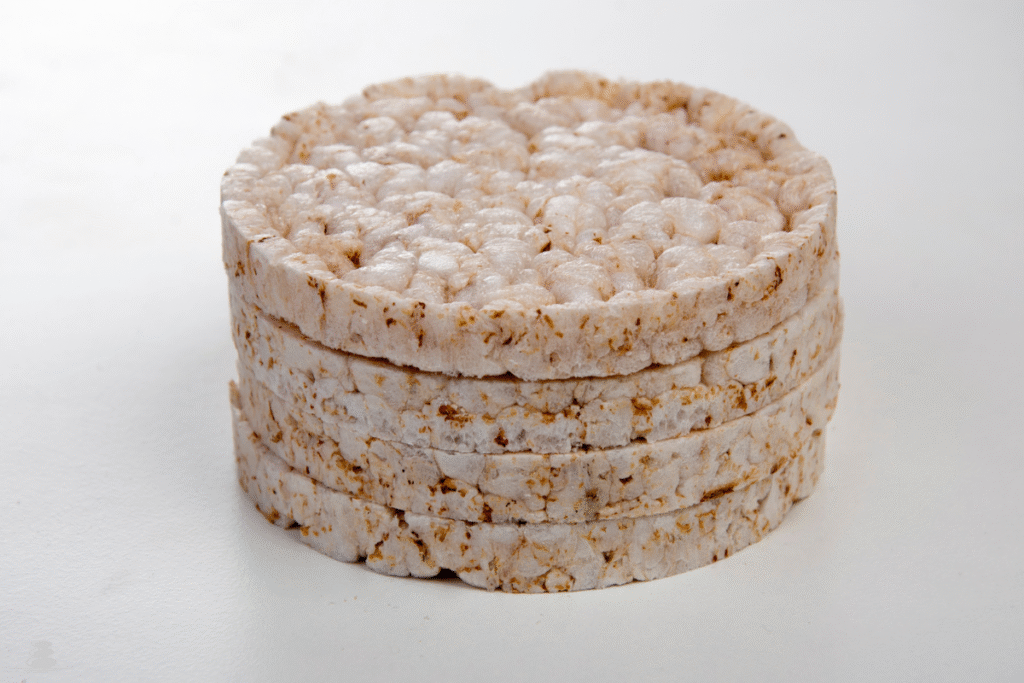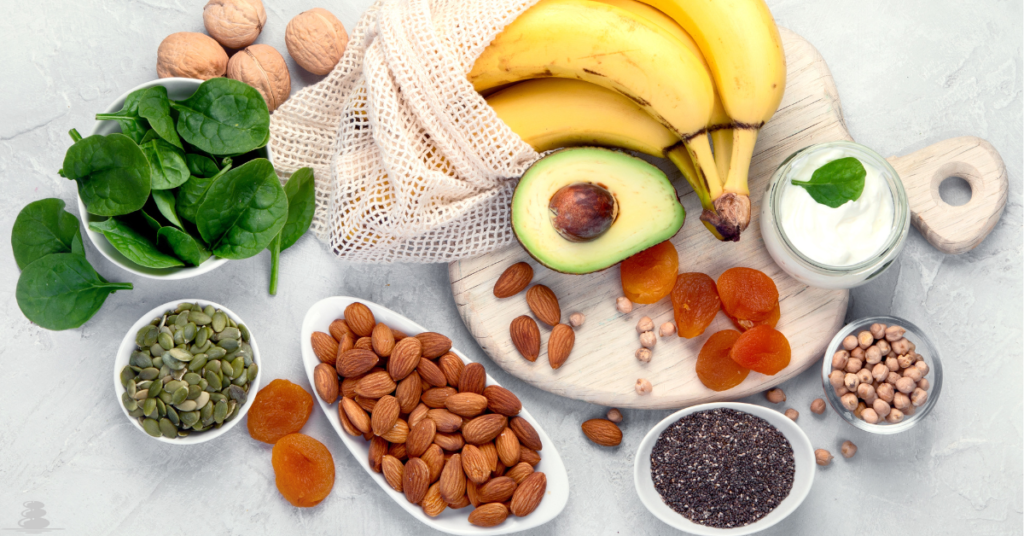Rice cakes have earned a reputation as a “diet food.” Walk into any health-conscious kitchen or scroll through a fitness influencer’s grocery haul, and you’re likely to see these airy, crunchy disks proudly displayed. Their popularity isn’t a surprise—they’re low in calories, fat-free, naturally gluten-free, and easy to top with anything from peanut butter to avocado. Add to that their satisfying crunch, and it’s easy to see why they’ve become a go-to snack for health-focused eaters.
But popularity doesn’t always equal nutrition.
For decades, rice cakes have been marketed as the ultimate guilt-free snack. They were especially trendy during the low-fat craze of the ‘90s, often seen as a “safe” food for those trying to slim down. And while they’ve stuck around in wellness culture ever since, we now know that simply being low in fat and calories doesn’t necessarily make something nutritious.
In today’s world of wellness and clean eating, rice cakes wear a health halo. They’re visually simple and minimally processed, which adds to the perception that they’re a wholesome choice. But when you take a closer look at their actual nutritional value, the story gets a little more complicated. Depending on how they’re made and what they’re made from (white rice vs. brown rice, for example), rice cakes can go from being a light snack to a fast-track ticket to a blood sugar spike.
So, are rice cakes really a smart choice for your body—or are they just cleverly marketed to seem that way? Whether you’re trying to lose weight, fuel a workout, balance your blood sugar, or simply snack smarter, it’s worth understanding what’s really going on with this crunchy favorite.
Let’s dive into the facts and find out if rice cakes deserve a place in your healthy lifestyle—or if it’s time to reach for something else.
Nutritional Breakdown (Per Plain Rice Cake)

Let’s take a look at what you’re actually getting when you bite into a plain rice cake:
- Calories: ~35–40 kcal
- Carbohydrates: ~7–8g
- Protein: ~0.5–1g
- Fat: ~0g
- Fiber: ~0.3–0.5g
- Sodium: Varies (usually 0–50mg)
At first glance, rice cakes seem like a pretty solid snack option. They’re low in calories, virtually fat-free, and contain no added sugars. That’s why they’re often favored by people watching their weight or trying to eat “clean.”
But here’s where things get interesting.
While low in calories might sound like a win, it also means rice cakes are low in nutrients. You’re not getting much protein to keep you full, hardly any fiber to support digestion, and little fat to help absorb vitamins or provide sustained energy.
Another thing to consider is that most rice cakes—especially those made with white rice—have a high glycemic index (GI). This means they digest quickly and can cause a rapid spike in blood sugar, followed by a crash. That “quick energy” might sound appealing if you need a pick-me-up, but it often leaves you feeling hungry again soon after, leading to more snacking and potential overeating.
Also, while 35–40 calories per cake may seem low, they’re very light and not filling on their own. Most people don’t stop at just one. If you eat 3–4 rice cakes at once (which is pretty easy to do), you’re suddenly looking at ~150 calories with very little lasting nutritional value.
So yes, rice cakes can look like a smart, low-calorie snack—but when you factor in their effect on blood sugar and how unsatisfying they are on their own, they might not be the best choice unless paired with more nutrient-dense toppings.
How Are Rice Cakes Made?
Rice cakes are made from white or brown rice that’s exposed to extremely high heat and pressure, causing the grains to puff up—similar to how popcorn pops. During this process, the rice expands to fill round molds, where it binds together into the familiar cake shape. The cakes are then moved along a conveyor belt, sprayed with flavorings or additives, and packaged for mass distribution.
However, what’s often overlooked is that this manufacturing process significantly reduces the rice’s natural nutritional value. The intense heat and pressure strip away many of the vitamins, minerals, and antioxidants found in whole grains. What’s left is a light, crunchy snack made mostly of refined carbohydrates that digest quickly and convert rapidly into sugar in the body.
While this can be beneficial if you’re looking to quickly replenish glycogen stores after a workout, rice cakes aren’t ideal when you’re aiming for a nutrient-dense snack. They lack the fiber, protein, and essential nutrients your body needs to stay energized and satisfied throughout the day.
How to Make Rice Cakes More Nutritious

While plain rice cakes aren’t very nutrient-dense on their own, they can become a balanced, satisfying snack with just a few smart toppings. Think of them as a blank canvas—what you add on top makes all the difference.
Here are some delicious and healthy ways to upgrade your rice cake game:
Nut Butter + Banana Slices
Why it works:
Nut butters like almond, peanut, or cashew butter add a dose of healthy fats and plant-based protein, which help keep you full longer. Banana slices provide natural sweetness and a boost of potassium and fiber.
Pro Tip:
Choose natural nut butters with no added sugar or oils. Sprinkle some chia seeds or cinnamon on top for extra nutrition and flavor.
Avocado + Cherry Tomatoes + Sea Salt
Why it works:
This combo is loaded with heart-healthy monounsaturated fats, fiber, and vitamins like C, E, and K. Avocado is creamy and satisfying, while cherry tomatoes add a juicy, fresh bite with antioxidants like lycopene.
Pro Tip:
Add a drizzle of lemon juice or a pinch of chili flakes for an extra kick and freshness.
Cottage Cheese + Berries
Why it works:
Cottage cheese is high in protein and low in fat (depending on the type you choose), making it great for muscle repair and satiety. Paired with berries—rich in antioxidants, fiber, and vitamin C—this makes for a sweet, balanced snack.
Pro Tip:
Top with a sprinkle of flaxseeds or a drizzle of honey for added texture and flavor.
Hummus + Cucumber + Olive Oil Drizzle
Why it works:
Hummus provides plant-based protein and fiber, while cucumber offers hydration and crunch with minimal calories. Olive oil adds healthy fats that support brain and heart health.
Pro Tip:
Add fresh herbs like parsley or dill for a Mediterranean-inspired twist, or sprinkle with sesame seeds for a bit of extra crunch.
Bonus Toppings to Try:
- Smoked salmon + cream cheese + arugula – a protein-packed, savory option with omega-3s.
- Greek yogurt + granola + fresh fruit – a sweet and satisfying breakfast or dessert alternative.
- Egg + spinach + hot sauce – great for a post-workout snack or quick savory breakfast.
The key is to combine protein, fiber, and healthy fats to turn your rice cake from a carb-heavy snack into something that fuels your body and keeps you satisfied.
Final Verdict: Are Rice Cakes Nutritious?
So, are rice cakes actually good for you?
On their own—honestly, not really.
Yes, they’re low in calories, fat-free, and convenient. But they’re also low in essential nutrients, fiber, and protein, and can cause quick blood sugar spikes—especially if you eat them plain or in large amounts. In other words, they’re not harmful, but they don’t bring much to the table nutrition-wise.
If you love the texture, the crunch, and the convenience, there’s no need to cut rice cakes out of your routine. Just be intentional about how you enjoy them. Top them with nutrient-rich ingredients, pair them with a source of protein or fat, and keep portions in check.
Bottom line
Rice cakes aren’t a miracle health food—but they’re not the enemy either. They’re a flexible, blank canvas that can either be empty calories or a delicious, balanced snack. The choice is yours.
Images: canva



